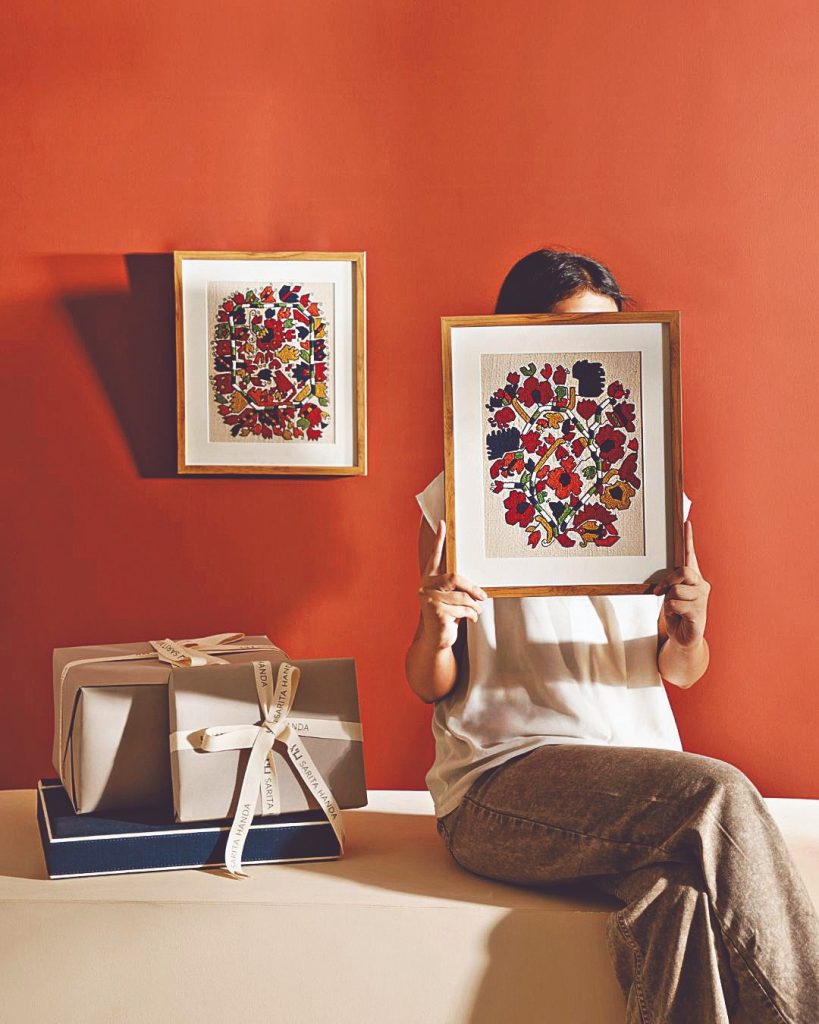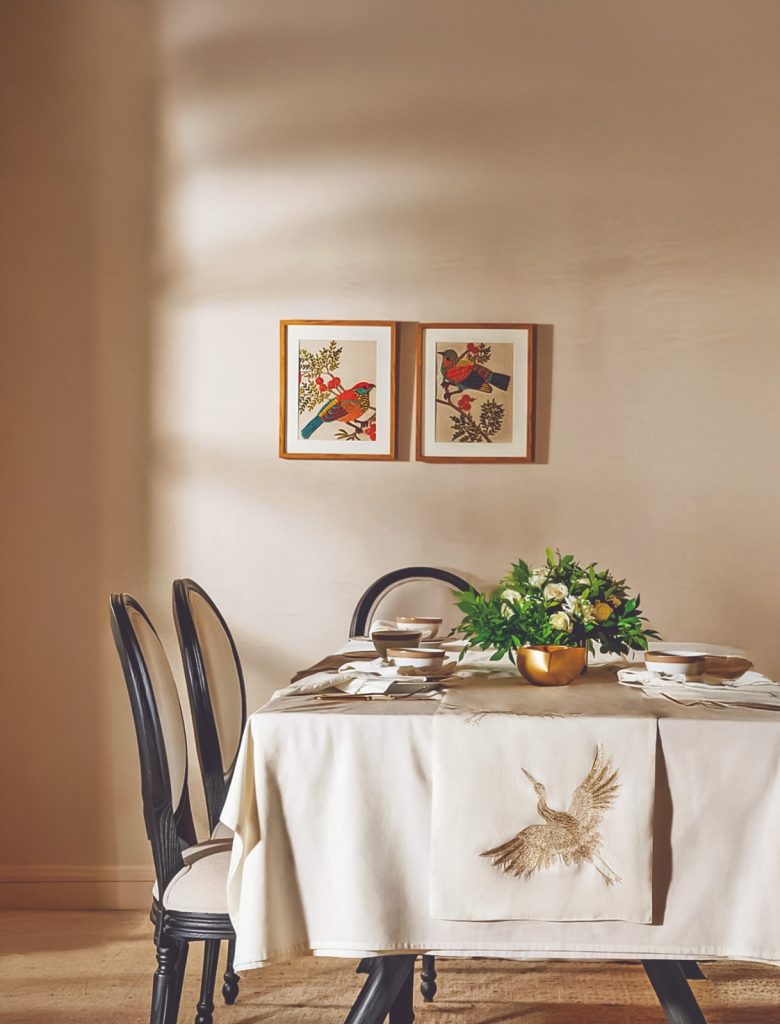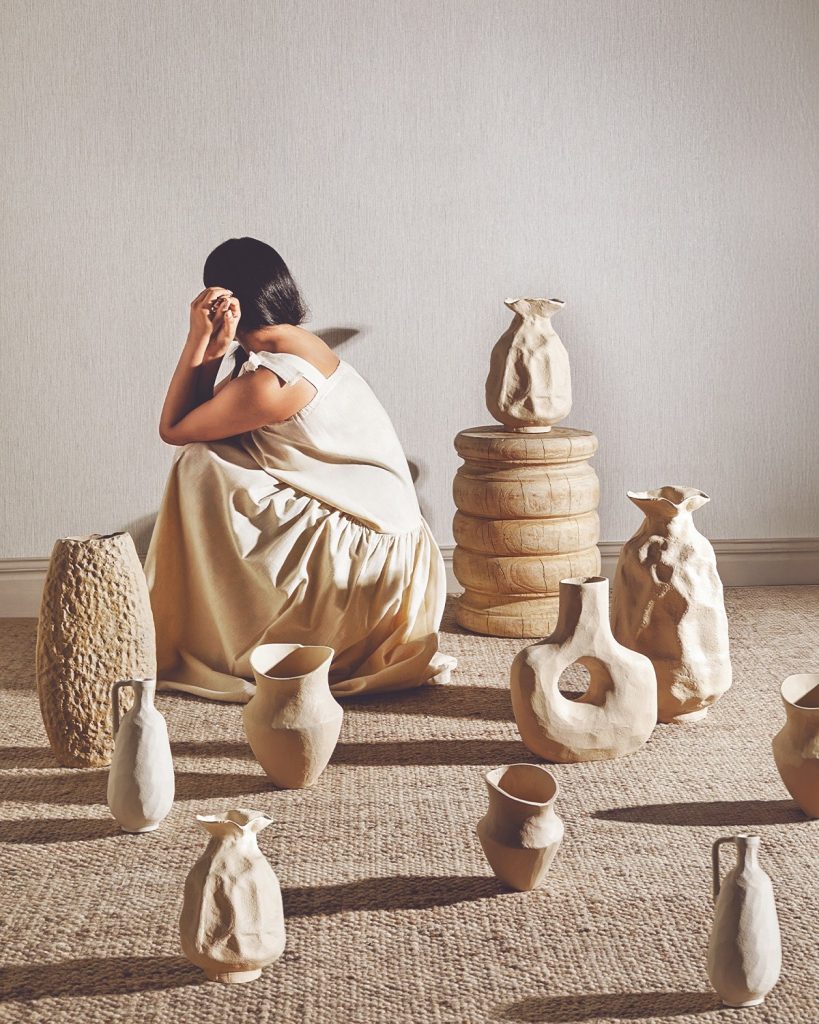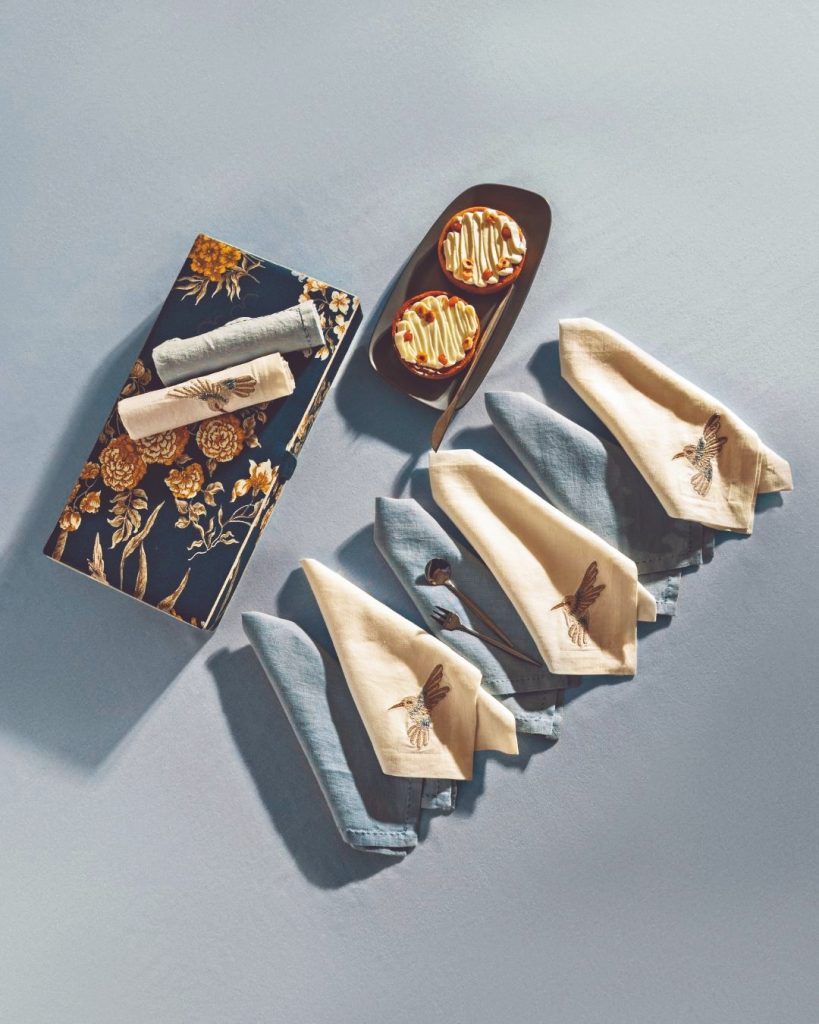Interview: Sarita Handa On Weaving Stories Into Spaces And Redefining Indian Décor
The House of Sarita Handa is inclusive by design, upholding craft heritage in the modern home
Sarita Handa’s story in the homegrown textile-led design industry is an inspiration for many. A pioneer in Indian luxury textiles, Sarita Handa has championed heritage craftsmanship for over three decades, putting Indian artisans on the global map. Founding Sarita Handa Exports in 1992, she redefined handcrafted excellence, partnering with renowned international retailers. Today, as a global powerhouse, the brand remains committed to women’s empowerment, providing training and employment opportunities, believing that empowering a woman transforms not just a family but the future of a nation. Says Ms Handa, “I envisioned an Indian brand that could stand shoulder-to-shoulder with the finest in global luxury — one that celebrates our rich textile traditions and the skilled hands that keep them alive. At its heart, the mission has always been to preserve heirloom craft, reimagined for the modern home.”
Having had a presence in the international marketplace for over 20 years as an export house, she felt the Indian consumers also sought products crafted in India with a global aesthetic. This is what led to the brand entering the Indian market and cementing its place here, “Sarita Handa was started as a crafts-led, heritage-focused lifestyle brand that aimed to give the discerning Indian customer this experience in India.

Design Without Borders
Inspiration came both from cross-border collaborations as well as her personal travels. She harks back to her first collection which was inspired by vintage French textile designs, “It was translated on fabric using traditional Indian embroidery like aari, chikankaari, hand-knotting and more such techniques. The colours were also based on trends of the time. Some of these pieces are a part of the collection even today.” She remembers her days as an army wife, which she credits for her love and knowledge of textile techniques, “I travelled the length and breadth of the country. I was drawn to the many different embroidery techniques seen across the country and incorporated similar work in our soft furnishing pieces. Like the phulkari from Punjab, zardozi embroidery, crewel work and kantha. Where some embroidery techniques lent themselves to the courts of kings, others were heirloom pieces that were added and presented to brides as part of their trousseau.”
Travelling to different parts of the country and the world — visiting museums, flea markets, and design studios is something she still finds extremely inspiring, whether it be a small village in India that creates magical textiles or museums in Paris that have preserved documents that go back in time. “I feel that travel gives you a different perspective,” she summarises her thoughts on the relation between her work and travels.
When travel is involved, can storytelling be very far behind? Not, if you ask her, “Every piece and collection we launch has a story behind it. Storytelling is what draws people, and it is what keeps them connected long after. It’s how we relate to one another, and it’s also what makes each of us unique.” Their collections reflect the lives of artisans, the cultures they come from, and the values they hold dear. Taking from the very essence of stories, these handcrafted pieces and the stories they represent are also meant to be passed down from generation to generation.

Tradition Vs Timeless
Sarita Handa’s designs are curated to embody both handcrafted tradition and contemporary living. Their global presence can be explained away by top notch quality and modern silhouettes. Says Handa, “We use the richest weaves, embroidered textiles, and luxurious fabrics. Every modern design element is thoughtfully infused with heritage and cultural craftsmanship. The Timeless Quilt is one such piece that is close to my heart. It can be machine-washed, and yet, is something that can truly be handed down to generations. The technique of this quilt originated in Italy and was interpreted by artisans as a bedspread.”
Indian craft has reached global recognition, and yet credit for the work done is not always forthcoming. Whereas, in India, there’s a shift in how people engage with their spaces. Ms Handa agrees, “Today, décor is about how it feels and what it means. People want to connect with the things they bring into their homes: stories, traditions, and craftsmanship that speak to them on a deeper level.”

There’s also a growing desire for spaces that feel nurturing; textiles that soothe, materials that feel warm to the touch, pieces that bring comfort in small, everyday ways. At the same time, there’s a renewed pride in Indian craft heritage and knowledge. Says Ms Handa, “Today, I feel the question most often asked is, “Why should I buy this”? This is where the story of origin gains importance. The use of sustainable materials, natural materials and eco friendly practices has gained importance.” Ultimately, luxury is being redefined as something that is handcrafted, indigenous, and environmentally conscious, she agrees. “Today’s customers are becoming conscious and mindful of resources and their carbon footprint. For Indian homes, we have always viewed luxury through the lens of craftsmanship, and we will continue to honour it that way.”
Sarita Handa’s primary work with natural materials like cotton and linen, which are biodegradable and breathable, is in sync with this ethos. “Our journey started with patchwork quilts and hand quilting, techniques rooted in tradition and minimal waste. Over time, embroidery became a hallmark of our identity, allowing us to add richness without excess.” The brand has since expanded into hand-spun and hand-woven textiles, and more recently into furniture and décor. Furniture is made using responsibly sourced redwood, oak, and white ash to create pieces that will last over generations. They also claim to use sustainable sources of energy like gas and solar for production.

Creative Collaborations
Collaborations have not just become popular but are necessary to augment and broaden one’s creativity and offerings, if you ask her, and the brand has taken this directive to collaborate with Indian and international designers across industries. Some of these are long-term arrangements, while some are seasonal or for a shorter period of time. They could range from furniture design, fabrics, décor accessories, to artists. However, her aesthetic permeates through her different ranges. “My home has a lot of linen from my brand,” she says. Modern European furniture is set against Indian art and vintage rugs, with a material palette that plays with metal, wood, marble, and glass. “I spent a great deal of time imagining how each element would come together, especially in how they would complement my art collection, which is deeply personal and rooted in my passion for cultural preservation.”
There are pieces from the Sarita Handa archives — textiles with rich textures and stories that trace her personal and creative journey. “Each one holds memory and meaning, and I keep them close as a reminder of the path that led me here,” she signs off.